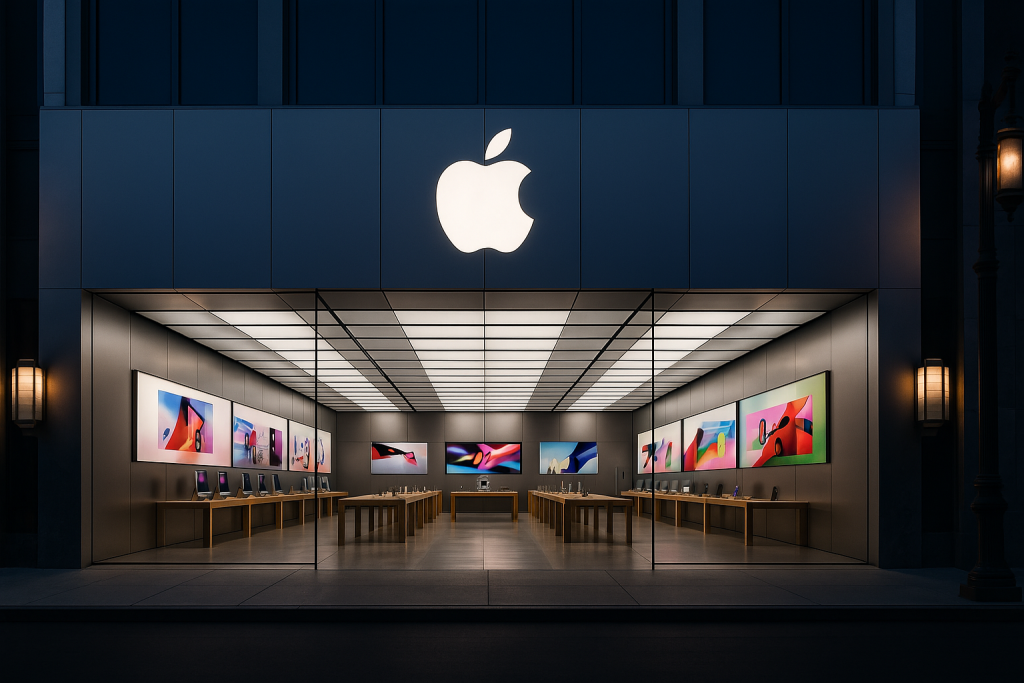Apple Quietly Airlifts 1.5 Million iPhones From India to Dodge Trump’s 125% China Tariff
In a move straight from a corporate survival playbook, Apple has flown over 600 tons of iPhones, roughly 1.5 million units, from India to the U.S., sidestepping what could be a brutal hit from President Trump’s proposed 125% tariff on Chinese-made electronics.
This isn’t just a logistics story. It’s a signal that Apple is reshaping its entire supply chain, fast.

The Tariff Trap: Why Apple Is Dodging China
Trump’s newly proposed tariffs, aimed at reducing U.S. reliance on Chinese tech manufacturing, would push import duties on China-made smartphones up to 125%, compared to just 26% for India. That’s not a typo. The cost difference is staggering, and it’s pushing companies like Apple to act now, not later.
If Apple passed that cost hike to customers, analysts say the iPhone 16 Pro Max could jump from $1,599 to $2,300. That’s a price point few buyers, especially in a tightening economy, are ready to accept.
India: The New iPhone Powerhouse
Apple’s pivot to India has been underway for years, but now it’s shifting into overdrive:
- India now handles 10–15% of global iPhone production.
- Plans are in place to double that to 30 million iPhones by 2025.
- Total Indian production value is expected to hit $34 billion by 2026.
The driving forces:
- Tariff relief: Lower U.S. import taxes from India.
- “Make in India” incentives: Tax breaks, subsidies, and fast-tracked approvals.
- Geopolitical insulation: Reducing dependency on China in case of future trade spats or global shocks.
Foxconn and other Apple suppliers are now ramping up production across southern India, solidifying the region’s role in Apple’s long-term manufacturing blueprint.
The “Green Corridor” at Chennai: Logistics on Steroids
To pull this off, Apple worked with Indian officials to establish a “green corridor” at Chennai International Airport, slashing customs clearance times from 30 hours to just 6.
This isn’t some environmental initiative, it’s pure speed and efficiency. That shaved-down timeline allowed Apple to move 600 tons of product, fast. While the name echoes the UN’s Green Customs Initiative, this is more about smooth logistics than ozone protection.
Strategic Stockpiling
Analysts estimate 20% of Apple’s U.S.-bound iPhones now come from India, a figure expected to grow as tensions with China linger. By quietly building stateside inventory now, Apple is buying time, literally, before any tariffs hit hard.
And let’s be clear: This isn’t just about iPhones. It’s about maintaining pricing power, controlling margins, and keeping the Apple ecosystem afloat amid global uncertainty.
Big Picture: Apple’s Real Flex Isn’t the iPhone, It’s Its Supply Chain
Flying 600 tons of iPhones halfway across the world isn’t just expensive. It’s agile, preemptive, and deeply strategic. Apple’s not waiting for trade policy to land a punch, they’re slipping it before it connects.
If there’s any company that knows how to turn global chaos into an operational win, it’s Apple. The real headline here? Apple’s not just making iPhones in India, it’s weaponizing its supply chain to outmaneuver geopolitics.